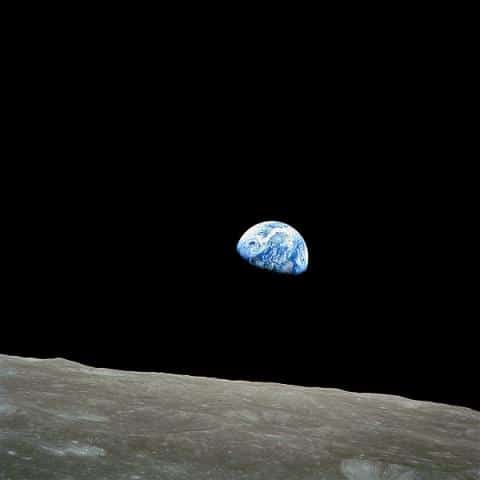Washington, D.C.—In a move that came as a shock both in this city and throughout the planet on which it is located, Standard & Poor’s late Monday downgraded Earth from its unique HHH rating—the only one in the galaxy—to HH+.
The coveted HHH rating—meaning, “extremely habitable”—has become indefensible, the ratings agency said, due to continuing failures to balance the atmospheric carbon budget and an increasingly toxic political debate that renders better policies unlikely any time soon.
“Atmospheric carbon inputs continue to outweigh carbon outputs (or sinks), leading to a growing and unsustainable carbon ‘surplus,’” wrote S&P. “Unlike fiscal surpluses, this surplus is very dangerous and is already triggering rising temperatures, heat waves, droughts, and extreme weather patterns.”
Under the new HH+ rating, the Earth is still considered “highly habitable” for humans. However, S&P also changed the planet’s outlook to “negative,” suggesting the possibility of further downgrades.
Critics Cite Dearth of Spaceships
Criticism came fast and furious. The United Nations’ Intergovernmental Panel on Climate Change agreed with S&P about the threat of global warming, but made numerous obscure and highly technical criticisms of its carbon calculations, and then sent these to American journalists who don’t understand the word “albedo” and can’t even convert Celsius to Fahrenheit.
“This is not their area of expertise,” said the IPCC in a written statement. “However, we cannot explain ourselves further without peer review. Our next report will be out in about five years.”
The U.S. Chamber of Commerce was even more scathing. “Even as S&P downgraded Earth, investors—those who choose to live here—are proving the silliness of this action,” said Chamber spokesman Terry Form. “If the Earth had really become less habitable, market forces would kick in, and we would see a booming spaceship industry. That’s just not happening.”
One rare supporter of S&P’s decision was the Search for Extraterrestrial Intelligence Institute, popularly known as SETI, located in Mountain View, CA.
“Look, there’s only a snowball’s chance in hell that we’re going to hear from another intelligent civilization,” said SETI senior astronomer Carly Sagan. “But we’re going to keep trying, and thanks to S&P we’ll probably get more funding. As this action shows, Earth’s residents need something to pin their hopes on right now.”
The search for extrasolar planets also proceeds apace, but so far no planet orbiting any star has received a rating close to Earth’s. The next closest is Mars at “-H,” meaning habitable only after vast improvements.
Mars itself was downgraded during the 1990s, once S&P realized that the Face on Mars was merely an optical illusion (a flub that some charge has significantly undermined the agency’s credibility).
Denialism Blamed, Blame Denied
In a recent interview, S&P senior director Troy Easter gave rare insight into one critical factor behind his agency’s action–citing a group of so-called carbon budget “deniers” who have become increasingly prominent in Washington and on the world stage.
“These people are willing to hold a gun to the planet’s head,” Easter said. “Without them, no carbon balancing can happen. And they don’t even think escalating atmospheric carbon dioxide is a problem.”
“This is not the kind of rhetoric you expect to find on triple-H rated planets,” Easter said.
So-called climate skeptics and their political supporters quickly fired back at S&P—even as they also blamed U.S. President Barack Obama for the ratings downgrade and the carbon budget gap, and also for continuing to try to reason with them and showing inadequate leadership.
“Carbon dioxide in the atmosphere has increased dramatically during his term,” said Republican Rep. Michele Badlands, who display a chart comparing the Obama administration’s emissions with those of the George W. Bush and Ronald Reagan governments. “And anyways, planets have shown a remarkable ability to ‘breathe back in’ carbon, when not weighed down by Big Government.”
For that reason, Badlands said, even though she blamed Obama for the ratings change, she wasn’t actually worried about it. “Carbon is good for life,” she said, reiterating a familiar campaign slogan. “Plus, it’s my favorite color.”
S&P’s Easter responded to Badlands’ comments with uncharacteristic bluntness. “We downgraded the planet because of Looney Tunes like her,” he said. “We weren’t explicit enough in explaining our last downgrade—of the United States—so read my lips: Carbon budget deniers are to blame. That’s ‘B-L-A-M-E.’”
At the end of his interview, Easter waxed philosophical.
“In a way, we’re glad that SETI is getting involved,” he said. “They should start the hunt for terrestrial intelligence, too.”
Markets Party on News
Responding to the downgrade, the Dow Jones Industrial Average clocked its best day ever, soaring 1,000 points to 12,200.
Some male residents of Earth, dressed in suits, were observed performing chest bumps on the floor of the New York Stock Exhange.
China, meanwhile, announced billions in new investments in clean energy, and a ramping up of its space program.
Just in case you missed it, this is a spoof, inspired by this article.
Subscribe to our newsletter
Stay up to date with DeSmog news and alerts






